Trend Radar: Visualization for Strategic Trend Management
As an effective tool, our trend radar helps companies to visualise the results of a trend analysis and thus gain a better overview of strategic decisions.
Trend Radar – At a Glace
- Analytical tool: A trend radar is used in strategic planning to visualize and track trends and developments in various industries and markets.
- Visualization of trends: It collects information from various sources and presents it in a clear, often circular format to show the relevance and impact of each trend on the company.
- Identification of opportunities and risks: A trend radar helps companies to recognize opportunities and risks arising from the trends observed and supports the development of proactive strategies.
- Strengthen competitive position: By using a trend radar, companies can react to changes at an early stage and secure their competitiveness in a rapidly changing market environment.
What is a Trend Radar?
A Trend Radar is a strategic tool used in trend management to identify, visualize, and prioritize emerging trends, innovations, and technologies that can impact industries or organizations. It provides a comprehensive overview of business trends and consumer behavior, enabling companies to monitor market dynamics and stay competitive in an ever-evolving environment.
By incorporating trend monitoring, a Trend Radar helps decision-makers understand how specific developments are gaining momentum and assess their potential influence on business strategies. This tool is essential for aligning organizational goals with future market needs, allowing businesses to proactively respond to shifts in consumer preferences and advancements.
Trend Analysis and Trend Radar
Trend Analysis and the Trend Radar are essential tools in strategic planning and innovation management, designed to help organizations navigate a rapidly changing landscape.
Trend Analysis involves systematically identifying and examining key trends, such as social, technological, economic, environmental, or political developments, to understand their potential impact on industries and markets. This process provides insights into emerging technology trends, and shifts in business dynamics, enabling companies to anticipate opportunities and challenges. By assessing the relevance, timing, and influence of these trends, organizations can make data-driven decisions to adapt and innovate.
A Trend Radar, on the other hand, is a visual framework that organizes and prioritizes trends based on their importance and proximity to an organization’s strategic goals. It is a critical tool for helping businesses focus on high-impact, emerging technology trends most relevant to their future success. By mapping trends into different categories – such as short-term, mid-term, and long-term impacts – the Trend Radar allows decision-makers to plan proactively and allocate resources effectively.
Together, Trend Analysis and the Trend Radar provide a comprehensive approach to staying ahead of industry disruptions, fostering innovation, and maintaining a competitive edge in a constantly evolving environment.
Functions of a Trend Radar
A trend radar serves as a central instrument in the trend management of companies and has various functions that are essential for strategic planning.
- Trend radars facilitate strategic trend management by visualizing trends.
- They support companies in recognizing and adapting to market changes at an early stage.
- Trend radars support the evaluation of the corporate relevance of trends and help to develop fields of action.
- They are decisive tools in innovation management and for future work.
- Trend radars play a key role in corporate foresight and in the structured foresight process.
Early recognition and significance of trends
Early recognition of trends is crucial for staying competitive, as it allows organizations to identify emerging opportunities and potential risks before they become mainstream. By analyzing the significance of trends, businesses can assess their relevance to market dynamics, and technological advancements. This proactive approach enables strategic decision-making, fostering innovation and ensuring long-term growth in a rapidly evolving environment.
Determine the business relevance of trends
Determining the business relevance of trends involves evaluating how emerging developments align with an organization’s goals, market position, and customer needs. This process helps prioritize trends that offer the greatest potential for growth, innovation, or competitive advantage. By focusing on trends with clear strategic value, businesses can allocate resources effectively and adapt to changing market conditions.
Development of strategic fields of action
The development of strategic fields of action involves identifying key areas where a business can respond to trends and drive long-term success. These fields are created by analyzing market dynamics, emerging technologies, and consumer needs to pinpoint opportunities for growth and innovation. By focusing on these areas, organizations can align their strategies, allocate resources effectively, and maintain a competitive edge in a rapidly evolving environment.
The Process of Building a Strategic Trend Radar
The process of building a Strategic Trend Radar involves several key steps to ensure its relevance, accuracy, and value for decision-making. This process is designed to identify, analyze, and prioritize trends that can shape an organization’s future and guide strategic action. Below is an outline of the typical steps:
- Define Objectives and Scope: Start by clarifying the purpose of the Trend Radar and its intended audience. Determine the focus areas, such as market trends, emerging technologies, or consumer behavior, and set boundaries for industries, geographies, or time horizons to ensure a tailored approach.
- Trend Scouting and Identification: Conduct comprehensive trend monitoring to gather information from a wide range of sources, including industry reports, expert opinions, academic research, startup ecosystems, and social media. This step focuses on identifying key trends and emerging technology trends that are gaining momentum or expected to disrupt markets.
- Categorization of Trends: Organize the identified trends into categories, such as technological, social, economic, environmental, or political trends. This categorization helps provide structure and clarity, ensuring the radar is comprehensive and easy to interpret.
- Trend Evaluation and Prioritization: Analyze the trends based on their relevance, potential impact, and urgency. This evaluation often includes criteria such as market size, adoption rate, alignment with business strategy, and competitive advantage. Tools like impact assessment grids or expert panels can help with prioritizing trends that are most critical to the organization.
- Visualization and Design: Create the Trend Radar by plotting trends on a visual framework that reflects their priority and timeline. Trends are often placed in concentric circles, with those closer to the center representing higher relevance or immediacy. This design allows stakeholders to quickly understand the strategic importance of each trend.
- Validation and Refinement: Share the initial Trend Radar with key stakeholders for feedback and validation. This collaborative step ensures that the radar reflects diverse perspectives, industry insights, and the organization’s strategic priorities. Adjustments are made to refine accuracy and usability.
- Integration into Strategy: Use the finalized Trend Radar to define strategic fields of action and guide decision-making. The radar serves as a tool for innovation management, resource allocation, and long-term planning, ensuring that trends are actively incorporated into business strategies.
- Continuous Monitoring and Updates: A Strategic Trend Radar is not static—it requires regular updates to incorporate new trends and changes in market dynamics. Establish a trend monitoring system to ensure the radar remains current and relevant over time.
By following these steps, organizations can build a Strategic Trend Radar that not only identifies significant trends but also provides actionable insights, fostering agility and resilience in a rapidly evolving environment.
The Advantages of a Trend Radar
A Trend Radar offers businesses a clear overview of emerging trends, enabling proactive decision-making and innovation. It helps prioritize significant trends based on their relevance, ensuring that organizations focus resources on areas with the highest strategic value. This tool enhances agility and prepares businesses to adapt to future developments effectively.
Advantages of a Trend Radar:
- Provides a structured visualization of trends and their relevance.
- Supports proactive planning and innovation management in your business environment.
- Helps prioritize trends for effective resource allocation.
- Identifies opportunities and risks early.
- Aligns business strategies with future market developments.
- Enhances decision-making with actionable insights.
- Encourages cross-functional collaboration and strategic alignment.
- Creating new products or solutions.
Discover the future of your industry and stay ahead of the curve with our Trend Radar – the easiest way to explore trends and valuable insights that will shape your business strategy.
Häufige Fragen und Antworten
To create a Trend Radar, start by identifying and gathering relevant trends through research, industry reports, and expert insights. Categorize these trends based on their impact and timeline, then prioritize them according to their relevance to your business goals. Finally, visualize the trends on a structured framework to enable strategic decision-making and guide future planning.
To identify trends with a Trend Radar, start by monitoring a wide range of sources such as industry reports, social media, and emerging technologies. Analyze patterns and shifts in market dynamics, and technological advancements. Once identified, categorize and prioritize these trends based on their potential impact and alignment with your organization’s objectives and insights in an interactive radar.
A Trend Radar supports companies in their strategic planning or strategic foresight process by providing a clear, visual representation of emerging trends and their potential impact on the business. It helps organizations prioritize trends and inform strategic decisions that align with their goals, enabling proactive decision-making and resource allocation. By identifying opportunities and risks early, the Trend Radar ensures that companies remain agile and well-prepared for future market developments and business environment.
Yes, we offer a Trend Radar for customers and stakeholders. Unlock the power of emerging trends and stay ahead of the competition with our Trend Radar.


